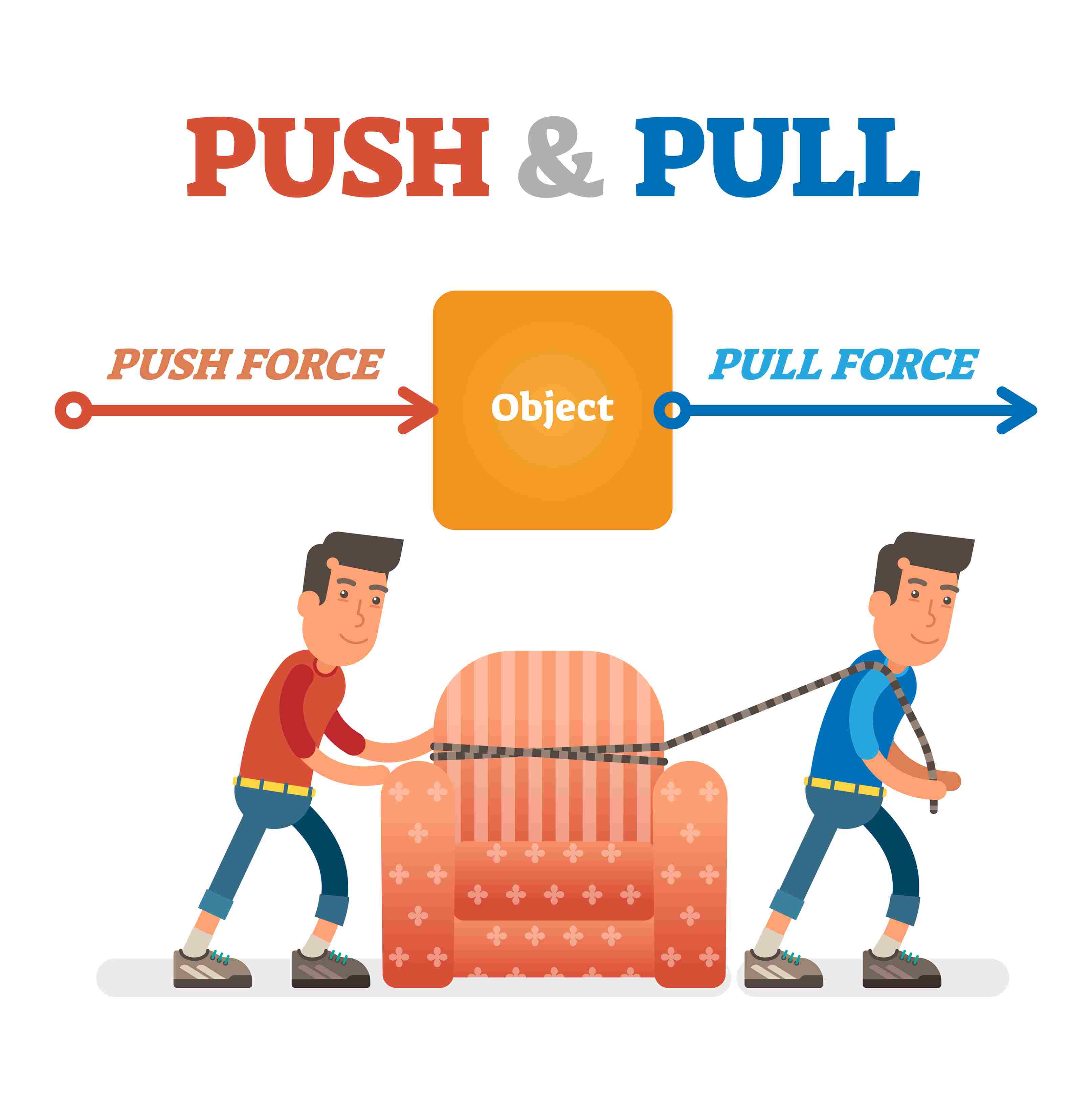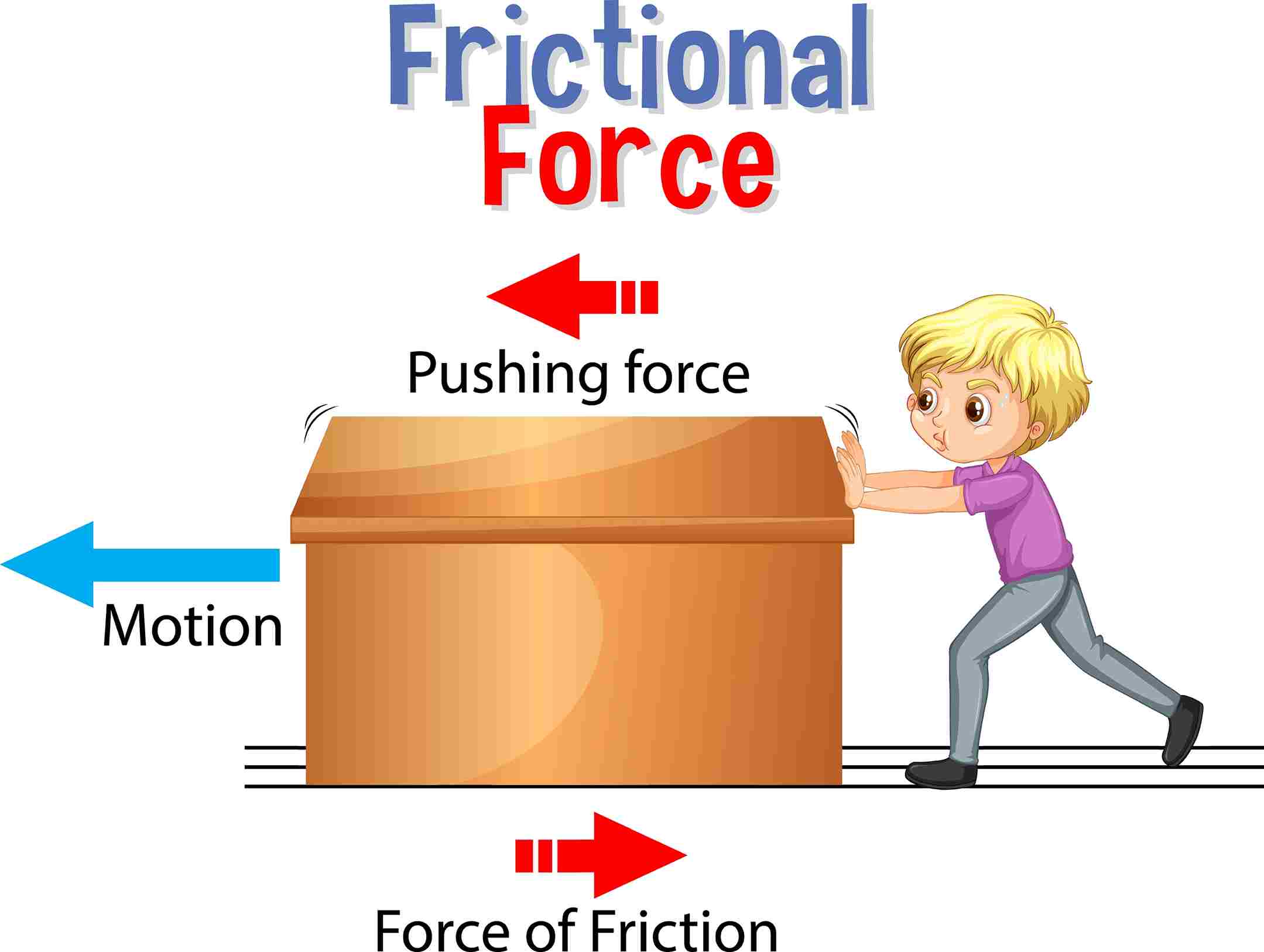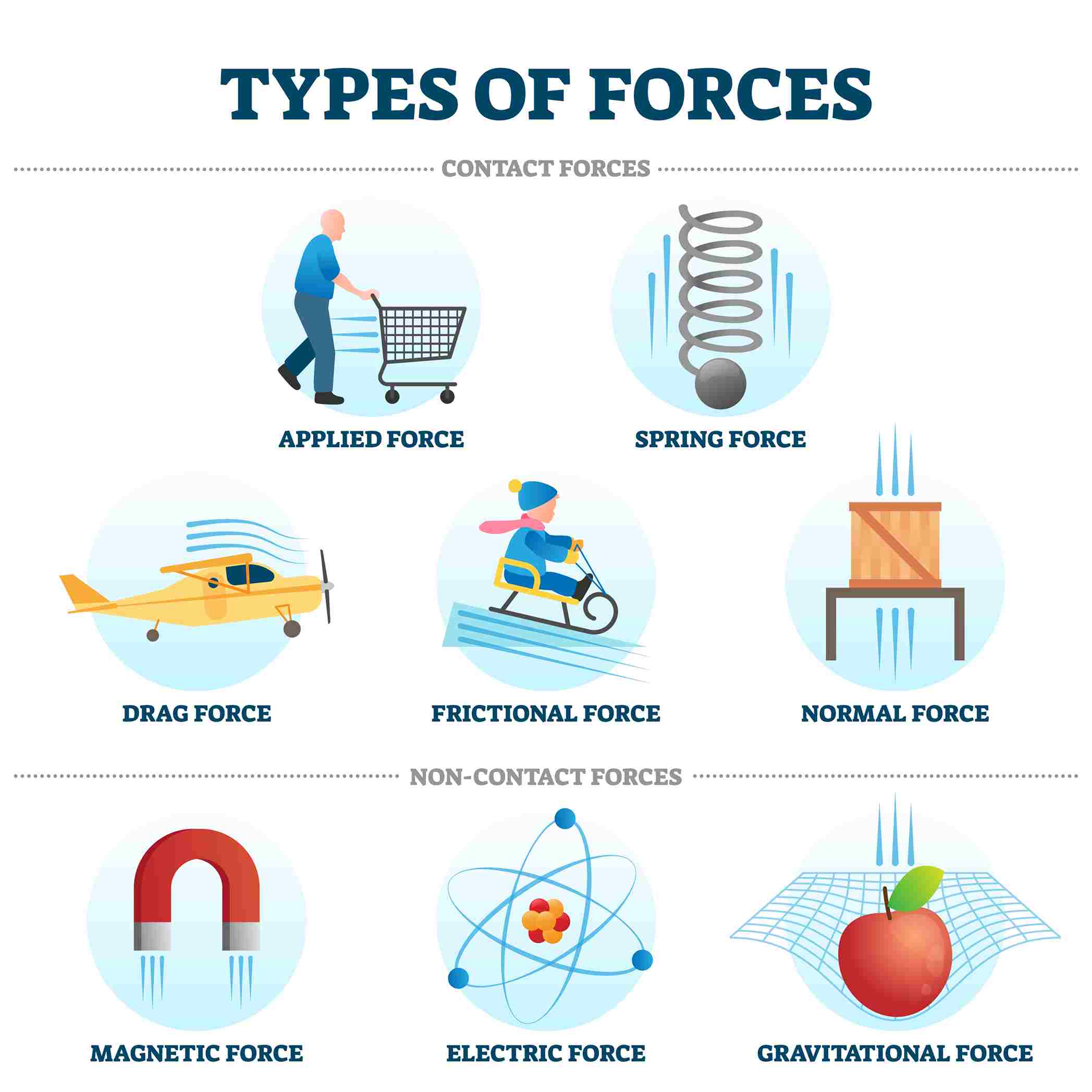Force and Pressure Class 8 Notes NCERT and MCQs
 23-08-2023
23-08-2023
 17:13 PM IST
17:13 PM IST
 Yadvendra Singh
Yadvendra Singh
The chapter defines force and discusses its properties such as magnitude of force, direction of force, effects of force on state of motion of an object. It also discusses types of force and defines pressure and atmospheric pressure.
Force
A push or a pull on an object is called a force. A force arises due to the interaction between two objects. Interaction of one object with another object results in a force between the two objects.
Examples of force: A goalkeeper saving a goal, a fielder stopping a ball, drawing a bucket of water from a well, opening a door, etc.

Fig.1: Force
Magnitude and direction of force
Force has magnitude as well as direction. Forces applied to an object in the same direction add to one another. If the two forces act in the opposite directions on an object, the net force acting on it is the difference between the two forces. The strength of a force is usually expressed by its magnitude. In case of change of the direction or the magnitude of the applied force, its effect also changes.
Effect of force on speed of the object and on its direction of motion
Force applied on an object may change its speed and direction. The effects of force are given below:
- The speed increases if the force applied on the object is in the direction of its motion.
- The speed decreases if the force is applied in the direction opposite to the direction of motion.
NOTE: A change in the speed of an object or the direction of its motion or both is described as a change in its state of motion.
- Force acting on an object may also cause a change in its shape.
Types of forces
A force can act on an object with or without being in contact with it. So, there are two categories of forces.
Contact forces
The force applied when it is in contact with an object is called a contact force.
- Muscular force: Since muscular force can be applied only when it is in contact with an object, it is also called a contact force.
- Friction: Friction is another example of contact force. It arises due to contact between surfaces. It always acts on all the moving objects and its direction is always opposite to the direction of motion. Examples of frictional force-
- Bringing moving ball to rest due to friction between the surface of the ball and the ground.
- Boat stops in water when we stop rowing due to friction between water and the boat.

Fig.2: Frictional Force
Non-contact forces
The force applied on an object without coming in contact with it is called a non-contact force. The types
- Magnetic force: The magnetic force is an example of a non-contact force. A magnet can exert a force on another magnet or on a piece of iron without being in contact with it.
- Electrostatic force: The force exerted by a charged body on another charged or uncharged body is known as electrostatic force. A straw acquires electrostatic charges after being rubbed with paper.
- Gravitational force: Every object in the universe, whether small or large, exerts a force on every other object. This force is known as the gravitational force. Objects or things fall towards the earth because of their gravitational force. Earth’s gravitational force is an attractive force and acts on all objects. Examples of gravitational force-
- Water beings to flow towards the ground as soon as we open a tap.
- A ball thrown upwards returns towards the ground.
- Leaves or fruits of a tree fall to the ground after they get detached from it.

Fig.3: Types of Forces
Pressure
The force exerted on a unit area of a surface is called pressure. Liquids and gases exert pressure on the walls of their containers. Winds and Cyclones are also caused due to the difference in air pressure.
What is the relation between force and pressure?
Force per unit area is called pressure. The smaller the area, the larger the pressure on a surface for the same force.

Atmospheric pressure
The pressure exerted by the air around us is known as atmospheric pressure. The pressure inside our bodies is also equal to the atmospheric pressure.
MCQs based on NCERT Class 8 Science Chapter 11: Force and Pressure
1. Which of the following forces is an example of a contact force?
a. Magnetic force
b. Electrostatic force
c. Gravitational force
d. Friction
Ans. d
Explanation:
Friction is an example of contact force. It arises due to contact between surfaces. Muscular force is another example of contact force. It can be applied only when it is in contact with an object. Magnetic force, electrostatic force and gravitational force are examples of non-contact forces.
2. The pressure inside our bodies is _______ the atmospheric pressure.
a. Equal to
b. More than
c. Less than
d. Inversely proportional
Ans. a
Explanation:
The pressure exerted by air around us is known as atmospheric pressure. The pressure inside our bodies is also equal to the atmospheric pressure.
3. Which type of force is applied by the archer to stretch the bow?
a. Electrostatic force
b. Muscular force
c. Frictional force
d. Magnetic force
Ans. b
Explanation:
The force caused by the action of muscles is called the muscular force. Examples- Force applied by the archer to stretch bow, to push an object, to lift a bucket of water, etc.
4. A rocket has been fired upwards to launch a satellite in its orbit. Name the two forces acting on the rocket immediately after leaving the launching pad.
a. Magnetic and Frictional
b. Electrostatic and Thrust
c. Gravitational and Magnetic
d. Gravitational and Thrust
Ans. d
Explanation:
When a rocket leaves the launching pad, the two forces that act immediately on it are the gravitational force that acts in the downward direction and thrust that acts in the upward direction (provided by the fuel).
5. When we press the bulb of a dropper with its nozzle kept in water, air in the dropper is seen to escape in the form of bubbles. Once we release the pressure on the bulb, water gets filled in the dropper. The rise of water in the dropper is due to
a. pressure of water
b. gravity of the earth
c. shape of rubber bulb
d. atmospheric pressure
Ans. d
Explanation:
When the bulb of a dropper is pressed with its nozzle kept in water, air in the dropper is seen to escape in the form of bubbles. Once we release the pressure on the bulb, water gets filled in the dropper. The rise of water in the dropper is due to the presence of atmospheric pressure on the liquid surface.
Frequently Asked Questions (FAQs) about Force and Pressure
What is Force?
What are the examples of contact forces?
What is the relation between force and pressure?
Share Blog
 Latest
Latest 
Comments